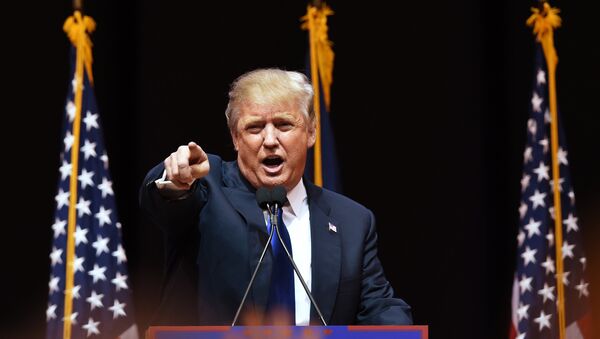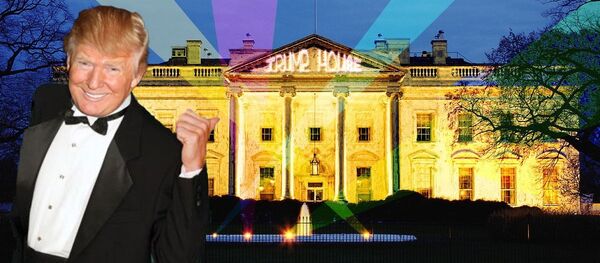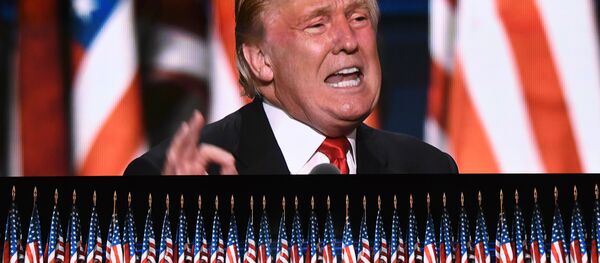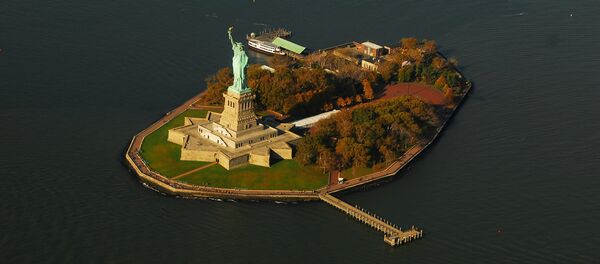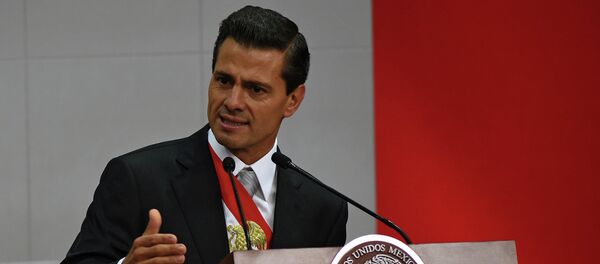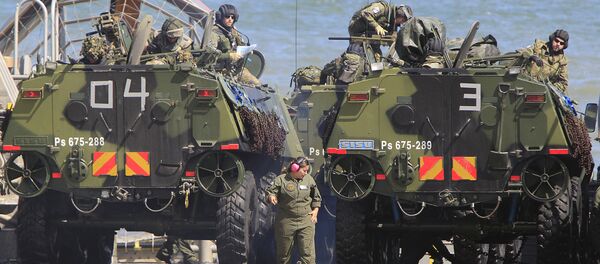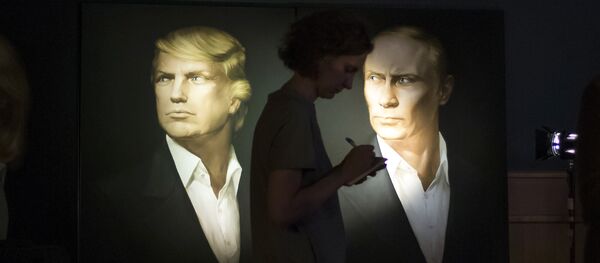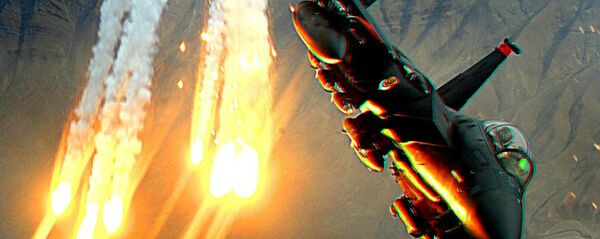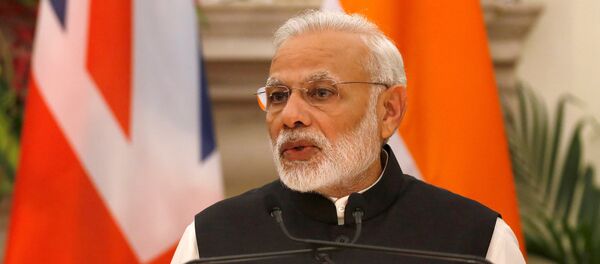Let’s start off by looking at the conditionals and constants of Trump’s envisioned foreign policy and then briefly forecast how he hopes to implement his plan to “Make America Great Again” on the world stage.
Constants and Conditionals
Constants:
This basically means that Trump wants to tweak the globalist economic system that his predecessors implemented, which is most vividly epitomized by his threat to charge a 35% tariff to all American companies which outsource their production and want to sell their finished products back to their home country.
However, it should be remembered that the original Détente during the Old Cold War wasn’t all peaches and cream – instead of direct military aggression against Soviet interests, the US opted for asymmetrical measures such as economic sanctions/warfare, “democracy promotion”, and “human rights”. The geostrategic proxy wars all across the global periphery calmed down for a short moment of time, but they immediately flared back up once the US felt comfortable enough to return to its old habits.
Conditionals:
Nevertheless, these foreign policy constants will never see the light of day if Trump is unable to carry through on his campaign promise to “drain the swamp” of existing bureaucrats and shake up The Establishment. What Trump specifically needs to do is replace the powerful neoconservative globalist faction of the American “deep state” (the permanent military, intelligence, and diplomatic bureaucracies) with pragmatic patriots that aren’t as prone to wage Hybrid War as their incumbents.
A lot will thus depend on how successful Trump and his transitional team are in doing this and the degree of resistance that they encounter from entrenched neoconservatives and their allies. Even if Trump is theoretically able to remove all of this shadowy faction from power and expel them from the “deep state”, that doesn’t mean that every facet of the US’ foreign policy will change because it’s still guided by the geostrategic imperative of retaining its global position, which will inevitably result in the continuance (or slight modification) of some existing trajectories.
The Trump World Tour
Having explained the constants and conditionals underpinning his foreign policy, here’s how Trumps’ America will ideally interact with the rest of the world if the President-elect is able to fully get his way with the “deep state”:
Latin America:
The US will continue to wage Hybrid War against Venezuela and try to covertly subvert Cuba through the “rapprochement” (if Trump doesn’t reverse it, that is), all while working to break the back of Mercosur and pressure it to merge with the pro-American Pacific Alliance. Instead of forming the basis of a revived pan-hemispheric “Free Trade Area of the Americas” (FTAA) like Hillary and the neoconservative globalists wanted to, Trump and his “deep state” team would more than likely retain this Latin American trade bloc as a separate unit and try to reach limited deals with it instead, taking care to preserve the US’ economic sovereignty though at the expense of the political independence of its counterparts.
Africa:
Nothing significant is expected to change when it comes to the US’ policy towards Africa. AFRICOM and special forces teams will continue to scour the continent under the aegis of “anti-terrorist” operations in order to disrupt China’s New Silk Road inroads there, particularly in the regions of Western and Eastern Africa.
The EU and NATO:
It could be expected that the Baltic States and other Eastern European countries “on the front lines” will be compelled to pay more money to the US in exchange for the ego-boosting military support that their elites depend on for enhancing their political standing among their Russophobic citizenry.
As for the EU, the US will deepen its partnership with the post-Brexit UK and will encourage the EU to loosen up and embrace more sovereignty-supporting movements as an alternative to what might otherwise become its inevitable collapse. Trump is absolutely opposed to the rampant “Cultural Marxism” and “political correctness” that defines the EU’s present elite, so he’ll probably use various means of pressure to impose his own ideology on the US’ “partners”, and this would of course include limited tacit support for EuroCautionaries (popularly smeared by the mainstream media as “Euroskeptics”). All in all, expect that the US will seek to guide the EU along a similarly populist path as the “Second American Revolution” that Trump and his supporters just succeeded in carrying out.
Russia:
Whether it’s Ukraine, Syria, or elsewhere, observers can expect that Trump will intend to practice a completely new and refreshing policy towards Russia which could be summarized as the undeclared division of parts of Eurasia into “spheres of influence”.
It won’t be a perfectly stable solution, and there will indeed more than likely be some overlapping “claims” that the ‘closet neoconservatives’ in Trump’s “deep state” will seek to exploit as an excuse for reviving the US’ anti-Russian proxy war militancy, but a temporary de-escalation of the New Cold War will be a welcome relief for both sides.
The Mideast:
The theme of Trump’s Mideast foreign policy will expectedly be hegemonic balancing. His administration will likely retreat from Obama’s overt and asymmetrical aggression but won’t want to concede any of the strategic “gains’ that it yielded.
As for Turkey, Trump might very well make a ‘peace offering’ to Erdogan by handing over Gulen as the ultimate concession in keeping Ankara in Washington’s strategic orbit.
Concerning the trifecta of Israel, Saudi Arabia, and Iran, Trump will try to balance all corners of this strategic triangle. He doesn’t like Iran because of the nuclear deal, yet he’s antagonistic to the Saudis for their support of Daesh, Hillary Clinton, and Huma Abedin. We can thus predict that he will try to play one off against the other to the ultimate benefit of Israel. Washington will always do everything in its power to promote Tel Aviv’s interests, and this is one of those geostrategic constants which will likely never change in American foreign policy. However, Trump might be bold enough to ask the Israelis to pay more “protection money” to the US, just as he wants the NATO vassals to do.
South Asia:
The US “deep state” is united in its desire to build India up as a regional and continental “counterweight” to China, despite India being objectively weaker than China in most economic, social, military, and stability indicators. Trump will also be especially attracted to Modi’s jingoism that Pakistan is a “Muslim terrorist-exporting Chinese ally” and will thus double down on the joint US-Indian Hybrid War on CPEC (the China-Pakistan Economic Corridor).
East and South Asia:
Observers should also expect a trade and monetary war to commence because Trump will try to incentivize American companies which have already outsourced their production to China to either return to the US or “re-outsource” from the People’s Republic to American-aligned rivals Vietnam, Indonesia, and India.
“Democracy Promotion” (Hybrid War) in Hong Kong and against the military government in pro-Chinese Thailand shouldn’t be ruled out either, and Myanmar will inevitably figure more prominently in the US’ strategic calculus as a result of its enviable geographic location along both the Bay of Bengal and southern China.
The views expressed in this article are solely those of the author and do not necessarily reflect the official position of Sputnik.
